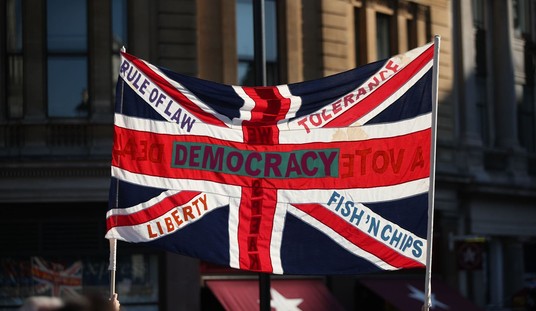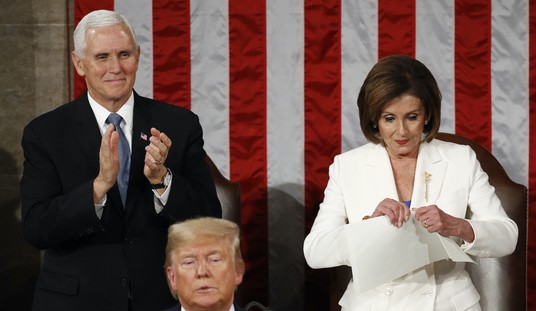Something had always seemed off about “Drink Masters,” and the strained issue finally has been served to me.
Last fall, Netflix delivered a new competition show that was right up my bar rail. Called “Drink Masters,” the show brought together top-flight mixologists from various parts to compete over numerous rounds, crafting complex concoctions to see who would be crowned the top bartender. The format is very familiar to anyone who has seen a reality cooking competition, except this would be an alcohol-fueled contest.
12 competitors were brought in an overly opulent bar, with 30-foot tall shelves of bottles, every imaginative glassware you could think of, a fully stocked pantry, as well as a full-scale kitchen. Each round entails a specific challenge, the winner of each round is considered “Top Shelf” and has a bonus benefit the next round. The bottom-rated folks are deemed “on the rocks,” and have to compete anew to avoid elimination.
Netflix Teams With ‘Blown Away’ Producer Marblemedia for ‘Drink Masters’ Reality Series (Exclusive) https://t.co/PNlfDT3BKr
— The Hollywood Reporter (@THR) August 18, 2022
Coming into this, I had expectations that were fully met. I was certain there would be a mixture of representation in the lineup, the mostly millennial crowd would be avante-garde in their crafting of drinks, and there would be some complex as well as superfluous applications to the process. We were sure to see many of the trendy tactics on display, from the use of foams, smoking cocktails, asperated additions, and complex and unneeded decorative touches were expected. The show delivered all these ingredients.
That is not to say I was dismissing this outright. I have zero problems with experimentation and the pushing of boundaries, using newer ingredients and different techniques. But at the same time, I have a resistance to unnecessary flourishes that are done for the sake of highlighting the server and doing little to service the drink. Most of the time spent creating was not in the bar but in the kitchen.
That said, this was an enjoyable romp, for what it was. How could it not be fun to see new uses and exclusive spirits employed in creative ways? But I also came away feeling like there was a lingering issue with the show. It was only recently, upon seeing the arrival of another competition show, that it struck me what I found bothersome.
To start, host Tone Bell addressed the group and declared the program to be “The greatest Happy Hour in the world!” But then we get our first problem. Upon being told what their assigned drink task would be, the group was instructed they would have 90 minutes to craft their cocktails. Another round saw a two-hour prep time. Ummm…you have defied the concept of “happy hour” when it takes twice as long to create and serve the drink!
The first task was to come up with a new approach to the Margarita, delivering something creative while sticking to the framework of the drink. There were a couple of touches that made sense, like making jello shots in lime and orange rinds. But then one was making a beet roll-up, another used yuzu, and there was even one drink using tomato elements. The judging was where this show saw departure.
Drink Masters on Netflix is a fun show that will surprise you with its drink creativity. The mixologist folk are really good showcasing drink combinations that’ll keep you talking. I don’t drink alcohol but it’s fun viewing anyway. pic.twitter.com/CD4BeLJBka
— President Kamala’s Hand (Again) (@myronjclifton) November 28, 2022
Almost every presentation came with a tray of decorative embellishments. Complex glassware — some with metal-wrapped touches — was common. So were dramatic presentations with the cocktails. One wanted to replicate the Mexican region of Oaxaca by grinding cookies to make sand, with pineapple leaves cut and sunk in. It lent nothing at all to the drink. So many times we saw service with flowers, colored Spanish moss, and other touches that delivered dioramas along with drinks. In just the first round, five of the drinks involved dry ice displays, and seven used foam.
The dry ice became an issue for one player, and became an issue for the show, too. Alex, a brash figure from Las Vegas, placed a piece of dry ice in his glass so his drink would bubble and smoke. Though he said he used a technique to affix the ice on the bottom, the judges cited the danger, were they to swallow a shard, so none of them sampled the drink at all. Yet, despite the fact that his cocktail was not even consumed, he remained in competition.
This was certainly a television decision, and that is a large component of the show, for obvious reasons. But you also become distanced by the unreality of much of the crafting. For one drink, a mixer was flash-freezing ingredients in a glass with gold flakes, which would melt after pouring to change the flavor and appearance. Some displays involved staged pieces, with things like brass pineapples and terracotta serving pots that just happened to be available. One round had the making of a drink stage, with a hole cut so a black light would illuminate the mixture. As soon as the judges lifted the drink to sip it became a plain, pallid, ungarnished bore of a drink.
There was not much hope of this show inspiring people at home to whip up a similar drink experience. Aside from some of the exotic elixirs, how many of us have liquid nitrogen, a metal tabletop cask for one-hour distillations, or industrial tools to craft a cocktail at our leisure? Even within the scope of a standard bar-restaurant many of these creations are not feasible. If a place has a signature drink that would involve the luxury of using a prep kitchen, sure — some of these steps can be done ahead. But otherwise a one-and-half, to two-hour prep time for a drink is not at all feasible.
Announcement TIME! Excited to be on @netflix Drink Masters premiering on October 28th! Me plus 11 other INCREDIBLY talented friends bring our cocktail game to TV!!!!!!!! This is so exciting to finally share! Can’t wait for y’all to see all the cocktail ACTION! #DrinkMasters pic.twitter.com/KfLqzzafuy
— Beautiful Booze (@beautifulbooze) October 12, 2022
This is when it hit. I saw the promo for a new competition show on NBC — “Hot Wheels: Ultimate Challenge.” Auto builders are charged with creating real-life versions of the designs found in some of the wild toy car creations. In the same way, “Drink Masters” is about fabricating some very fanciful creations that do not exactly have practical applications. The drinks are impressive in design, but the reality is not there.













